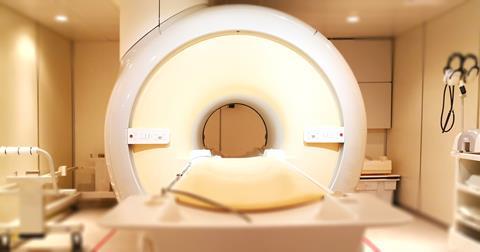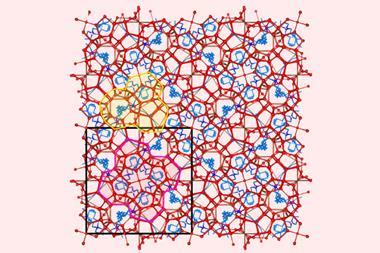From breaking down microplastics to rapid diagnosis of debilitating diseases, magnetism is finding new applications in everyday life
Magnetism is all around us, and its applications go far beyond simply sticking things to the fridge door and swivelling compass needles. From purchasing goods to disease diagnosis, magnets are not only essential to daily life but have underpinned solutions throughout history. With the growing demand for new ways to solve global problems, magnetic materials will continue to play a key role in technological innovation.
Early attraction
The understanding and application of magnetism have come a long way since its first use. Tales of incomprehensible phenomena related to magnetite – like magical rocks attracting the metal tip of a shepherd’s staff – were common in ancient times. And though Greek philosopher Thales gathered notes on static electricity in the 6th century BCE, not until the early 19th century were great strides made in explaining the process. It is then that James Clerk Maxwell, Michael Faraday1 and Hans Christian Ørsted laid the groundwork for its use in solving real world challenges.
Pragmatism and magnetism
Nowadays, magnetism resolves simple daily problems and is found in several household products. Open a refrigerator door or buy coffee using a credit card and you’ll find magnets central to both. A magnetic seal ensures the freshness of the food inside the refrigerator and the credit card’s contactless chip and magnetic strip stores the information a purchase requires.

Manipulation of large magnets in hydroelectric dams and wind turbines generates clean, sustainable energy – transforming the energy sector. Theorised magnetic materials could improve the speed and efficiency of computer processors a thousand-fold or more. Magnetic nanocoils even have the potential to break down ocean microplastics.2 And magnetic resonance imaging (MRI) is an established technique for the early detection of disease offering a fast, non-destructive and non-invasive means of observation on atomic and macroscopic scale.
Although intrinsically linked to innovation throughout history, the full potential of magnetism is yet to be uncovered. Fluorescent nanoparticular bioimaging probes – known as conjugated polymer nanoparticles (CPNs) – are a recent medical breakthrough. The innovation pivots on adding magnetic properties to fluorophores, which improves their efficiency in a number of lab techniques.
CPNs’ inclusion in lateral flow rapid diagnostic tests has potential to improve biomarker detection speed
With their magnetic core, CPNs excel in two modes of bioimaging. They not only enhance fluorescence imaging but also boost signal and sensitivity when used as contrast agents, improving medical imaging analysis. CPNs’ combination of properties enhance various diagnostic tools. Adding a probe with magnetic properties opens the possibility of using magnetism to measure the strength of interactions in binding assays. Essentially, they improve sensitivity and widen the assay window for key disease biomarkers.
With increasing demand for fast diagnosis tools, lateral flow technologies are gaining interest for the rapid diagnosis of numerous debilitating diseases. CPNs’ inclusion in lateral flow rapid diagnostic tests has potential to improve biomarker detection speed, with a wide colour range facilitating a sensitive, mass screening capability.
These enhancements can guide the treatment and outbreak management options of detectable pathogens including viruses like the coronavirus that causes Covid-19
These enhancements have the potential to provide health services with vital extra time when combatting a number of cancers, and guide the treatment and outbreak management options of detectable pathogens including viruses like Sars-CoV-2, the coronavirus that causes Covid-19.3
From navigating to innovating
Magnetism is deep-rooted in human history and ingrained into modern everyday life. However, with global problems demanding new solutions, we still look to it today for its potential to produce next-generation technology.

Using rapid technologies to diagnose progressively common, debilitating diseases can ease the strain on healthcare services. Stream Bio’s conjugated polymer nanoparticles uniquely combine immense fluorescence with powerful magnetism to create an enhanced fluorophore which has the reach to benefit this critical industry. With Stream Bio’s range of nine non-toxic CPNs covering the entirety of the visible light spectrum, with a further extension into near-infra red range, their uses have been validated across a myriad life science applications. Offering both higher efficiency in everyday laboratory operating procedures and solutions to everyday and emerging medical issues, innovations with magnetism continue to shape the world around us.
Stream Bio focuses on new ways to manipulate this phenomenon to offer exciting solutions to global problems, always remaining at the cutting edge of innovation.
References
1. M Faraday, Phil. Trans. R. Soc. Lond., 1832, 122, 125–162 (DOI: 10.1098/rstl.1832.0006)
2. J Kang et al., Matter 2019, 1, 745–758 (DOI: 10.1016/j.matt.2019.06.004)
3. L Feng et al., Adv. Mater., 2014, 26, 3926–3930 (DOI: 10.1002/adma.201305206)
Additional information
Further Reading
S Chikazumi, Physics of Magnetism, John Wiley and Sons, 1984
J Clarke, SQUIDs, Scientific American ( August), 46-53, 1994
D L Cox and M B Maple, Electronic Pairing in Exotic Superconductors, Physics Today, 32–40, 1995
Materials Science in High Magnetic Fields, Materials Research Society Bulletin, 27, 1993
R G Newton, What Makes Nature Tick? Harvard University Press, 1993

















No comments yet